The town that houses the Sistine Chapel in Segovia, whose frescoes are exhibited in the Prado Museum.

In the northwest of the province of Segovia , in the Hoces del Riaza Natural Park and perched on an elongated hill, lies Maderuelo , a town steeped in history and filled with treasures to discover. Sheltered by a wall, much of which is still preserved, this town of marked medieval character once had, thanks to its military importance, more than a dozen parish churches, as well as jurisdiction over some twenty smaller villages and towns. However, after the Civil War, the Linares reservoir flooded the most fertile lands and surrounding pastures, depriving many families of resources, forcing them to emigrate, leaving the town almost depopulated. Currently, it has just over 150 inhabitants, but thanks to its charm and the natural environment that shelters it, tourism has restored some of the splendor it once enjoyed.
Crossing the Puerta de la Villa , one of the remaining entrances that preserves thick armoured wooden doors with decorations and polychrome armour from the 15th century, and walking through its cobbled streets allows the visitor to travel back in time on an adventure that takes him directly to the Middle Ages, whose brushstrokes can be appreciated, above all, in the Plaza de San Miguel , a small corner where the Romanesque church that gives the place its name is located. This temple topped with a small bell gable houses several burial sites framed by Gothic arches.
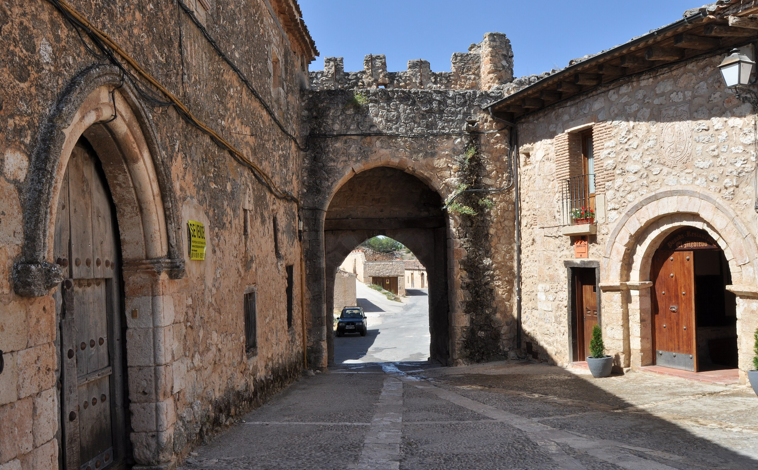
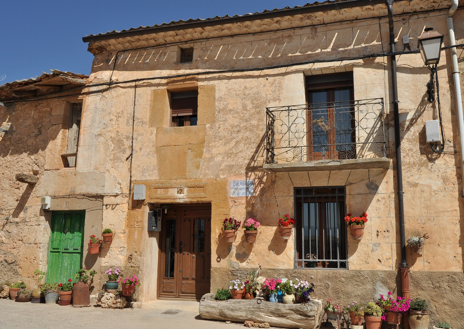
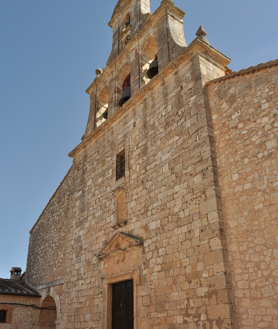
Another essential stop is the Plaza de Santa María , which occupies the central part of the hill and is presided over by the Church of Santa María de Castillo , which stands out for its size and the diversity of styles it preserves, being the only Segovia temple with remains of the Caliphate style. As an interesting fact, it is worth knowing that inside there is also a mysterious treasure, a mummy found in 1864 displayed under a glass case. Beneath the porticoed atrium of the church is the Alcarcer viewpoint. The Plaza del Baile, where the market was once held, and the town hall, located in the building that served as a prison, of which the 16th-century doorway and barred windows are preserved, complete the stops on this route.
One of Maderuelo's symbols, as well as one of its most curious elements, is its Puente Viejo (Old Bridge), a construction only visible when the level of the Linares reservoir drops sufficiently. This is when you can appreciate this ashlar work, with five arches half-buried by mud, which connects the town with the Veracruz chapel and the highlands of the páramo. In ancient times, to cross it, it was necessary to pay a toll to the Marquis of Villena , as confirmed by the Pacheco family coat of arms adorning the paramo.
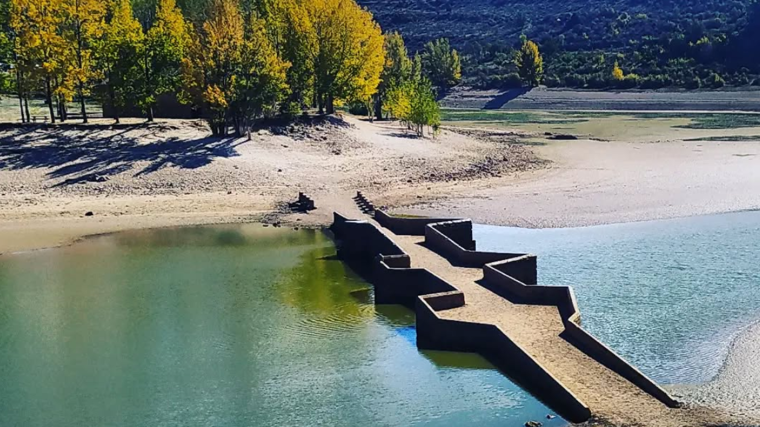 Image of the Old Bridge
Javi Maderuelo
Image of the Old Bridge
Javi Maderuelo
On the other side of the river lies the Hermitage of the Vera Cruz , a temple known as the Sistine Chapel of Segovia for its exquisite Romanesque frescoes, one of the most exceptional works of Spanish painting from the Late Middle Ages, depicting various scenes such as The Adoration of the Magi, The Mystic Lamb with Cain and Abel, and The Creation of Adam. In 1947, fearing the Linares reservoir would flood , it was decided to move them to the Prado Museum, leaving a replica in place. Also worth noting is the Hermitage of Castroboda , a late 18th-century temple that local residents painstakingly built to house their patron saint.
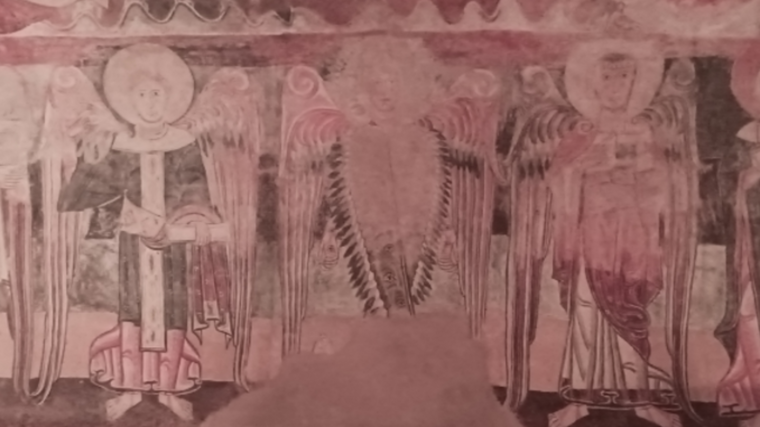 Replica of the Romanesque frescoes in the Hermitage of the Vera Cruz
vicesani
Replica of the Romanesque frescoes in the Hermitage of the Vera Cruz
vicesani
Nature lovers can complete their getaway with a hiking route through the Hoces del Río Riaza Natural Park or canoeing on its waters.
ABC.es





